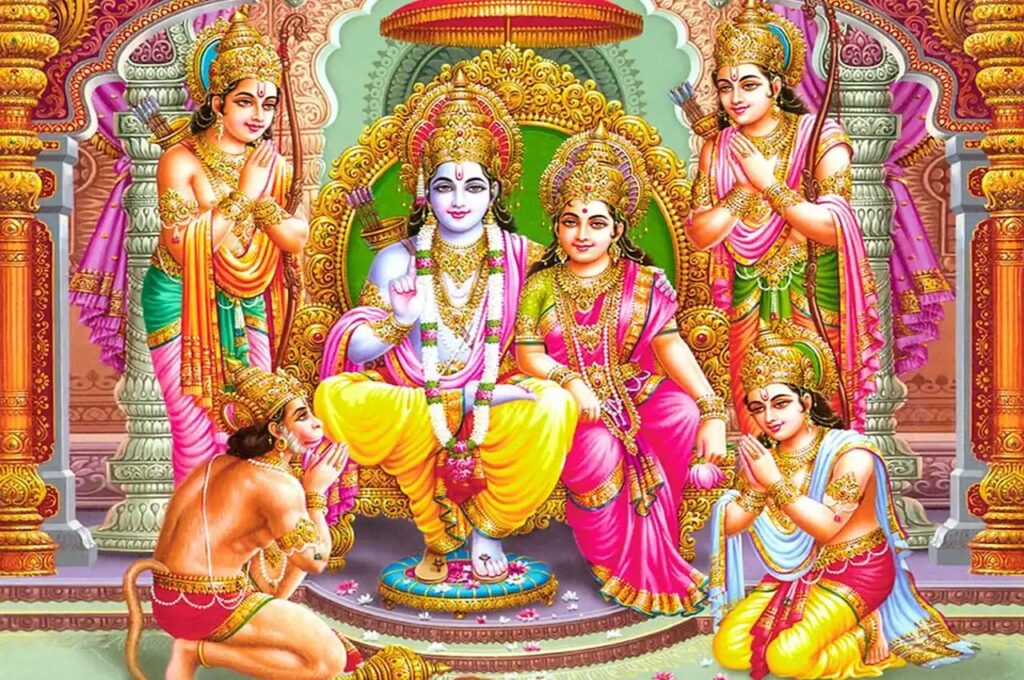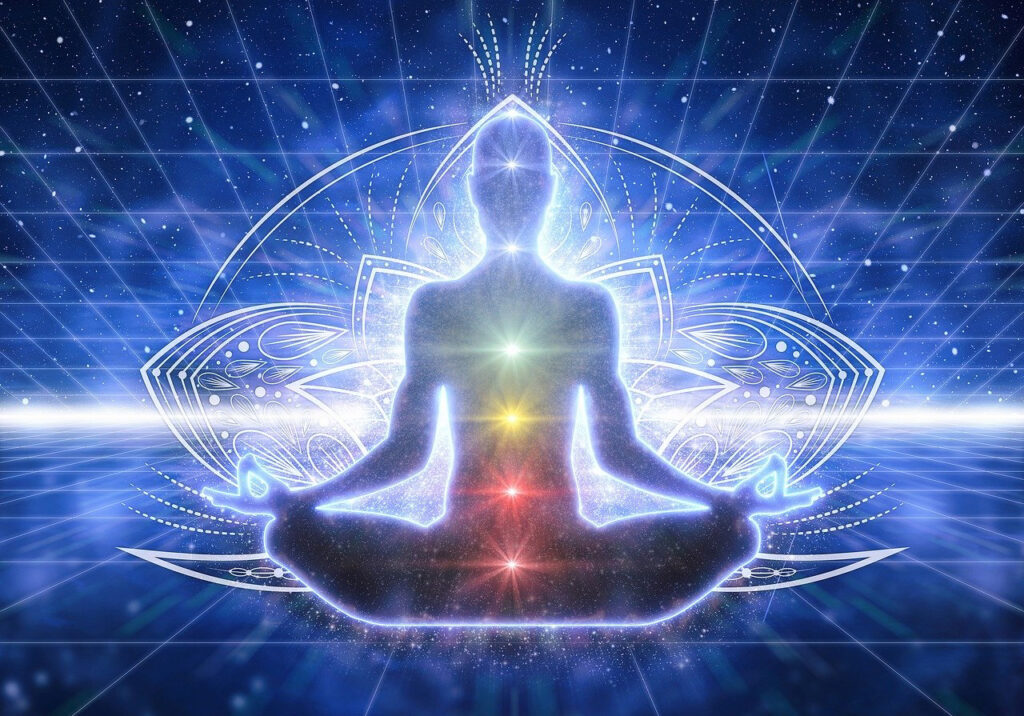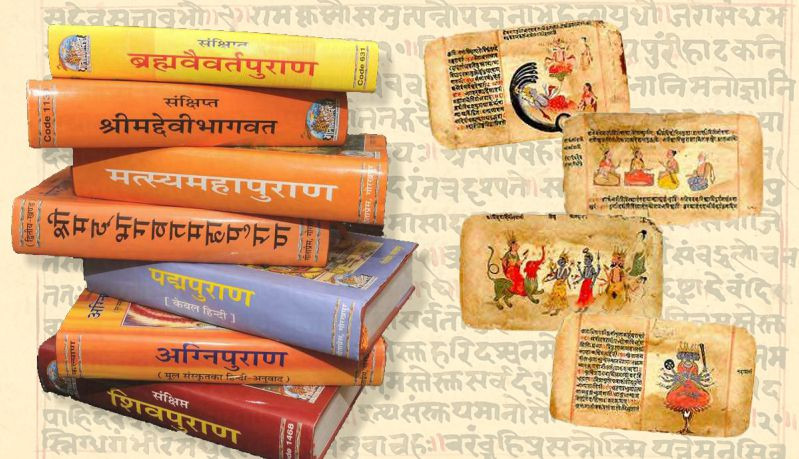What's the "Om (ॐ)?
Om (or Aum) is a sacred syllable, sound, and spiritual icon of Indian religions, particularly Hinduism, Buddhism, and Jainism. It is considered the greatest of all mantras and is deeply embedded in philosophical, spiritual, and even scientific understanding.
Here’s a vast description of Om:
1. The Primordial Sound and Universal Vibration:
The Sound of Creation: In Hinduism, Om is considered the primordial sound of creation, the original vibration from which the entire universe manifested. It is the “cosmic hum” that underlies all existence.
Energy, Frequency, Vibration: This concept aligns with modern scientific understanding that everything in the universe is made of energy and vibration. Chanting Om is believed to align an individual’s frequency with this universal, original frequency.
“Om is All This”: Ancient texts like the Mandukya Upanishad dedicate themselves to explaining Om, stating that it symbolizes everything manifest and unmanifest, “what has become, what is becoming, what will become.”
2. The Triadic Nature (A-U-M): Om is often transliterated as AUM, and each of the three sounds holds profound significance:
A (Akaar): Represents the waking state (Jagrat) and the beginning of all creation. The sound originates from the back of the throat. It is associated with Brahma, the creator deity.
U (Ukaar): Represents the dream state (Swapna) and the subtle realm, the state of preservation. The sound rolls forward along the palate. It is associated with Vishnu, the preserver.
M (Makaar): Represents the deep sleep state (Sushupti), a state of stillness, tranquility, and dissolution. The sound closes at the lips. It is associated with Shiva, the destroyer or transformer.
The Silence (Turiya): The silence that follows the chanting of AUM is considered the fourth state of consciousness, known as Turiya. This is the state of pure consciousness, ultimate reality, or enlightenment, transcending the waking, dreaming, and deep sleep states. It represents the infinite and the unknowable.
3. Symbolism of the Written Om (ॐ): The visual symbol of Om in Devanagari script (ॐ) is also highly symbolic, with each curve and dot representing different states of consciousness:
Lower Left Curve: Represents the conscious, waking state.
Upper Left Curve: Denotes the unconscious state, or deep sleep.
Lower Right Curve: Is the dream state, between waking and unconsciousness.
Semicircle above the Curves (Maya): Represents “Maya” or illusion, the veil that prevents us from realizing the ultimate truth. It is the biggest obstacle to spiritual development.
Dot above the Semicircle (Turiya): Symbolizes the absolute state of consciousness, pure bliss, and enlightenment, existing beyond the three states of waking, dreaming, and deep sleep.
4. Philosophical and Spiritual Significance:
Essence of Brahman and Atman: In Hindu philosophy, Om is the essence of the supreme Absolute (Brahman), consciousness, and the individual soul (Atman or Self). It serves as a sonic representation of the divine.
Bridge to the Divine: It is seen as a bridge between the finite and the infinite, promoting a sense of connection to the supreme.
Tool for Liberation (Moksha): For yogic practitioners, Om is a basic tool for meditation on the path to liberation (moksha), self-realization, and attaining higher states of consciousness.
Mantra of Mantras: Om is considered the greatest of all mantras, the “seed” of transcendental sound. It is often prefixed to other mantras, prayers, chants, and spiritual texts.
Unification: The Om symbol represents the unification of mind, body, and spirit, and the interconnectedness of all existence.
5. Benefits of Chanting Om:
Physical Benefits:
Creates soothing vibrations that resonate through the body, from the solar plexus to the crown chakra.
Activates the vagus nerve, which helps regulate the nervous system, leading to relaxation and reduced stress.
Can reduce blood pressure and stabilize heart rate.
Purifies the aura and promotes a sense of balance in the body’s subtle energy systems.
May have therapeutic effects for conditions like depression and epilepsy by calming brain activity.
Improves immunity and strength.
Mental and Emotional Benefits:
Calms the mind, reduces stress, anxiety, and restlessness.
Enhances concentration, memory, and focus.
Silences the constant stream of thoughts, fostering mental clarity.
Promotes emotional balance and allows for more stable responses to challenging situations.
Cultivates a sense of peace, tranquility, and happiness.
Improves imagination and creativity.
Spiritual Benefits:
Connects individuals to a higher power and deeper self.
Aids in achieving heightened states of mindfulness and self-awareness.
Facilitates spiritual growth and self-realization.
Helps in letting go of negativity and fostering a more positive outlook.
Aligns consciousness with cosmic energy.
6. Om in Different Religions and Philosophies: While most prominent in Hinduism, Om’s significance extends to other Indian religions:
Buddhism: Om is integrated into meditation practices to achieve focus and enlightenment, representing the underlying emptiness of all phenomena. It can appear within mandalas, symbolizing unity.
Jainism: Om is revered as a condensed form of important religious texts and is linked to the five supreme beings (Pañca-Parameṣṭhi). It emphasizes purity and liberation.
Sikhism: Om (specifically Ik Onkar) is a foundational concept, emphasizing the oneness of God.
Possible Global Connections: Some scholars suggest linguistic and conceptual links between Om and other sacred sounds like “Amen” in Christianity and “Amin” in Islam, and even the Greek “Omega” (the beginning and the end, encompassing everything).
In essence, Om is far more than just a sound or a symbol. It is a profound representation of the ultimate reality, the totality of existence, and a powerful tool for spiritual transformation and inner peace. Its vibrations are believed to resonate with the fundamental rhythm of the universe, offering a path to deeper understanding and connection.




